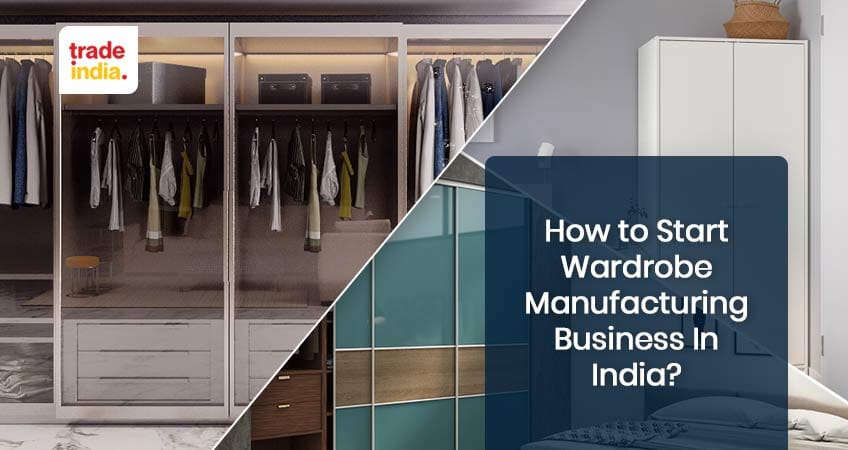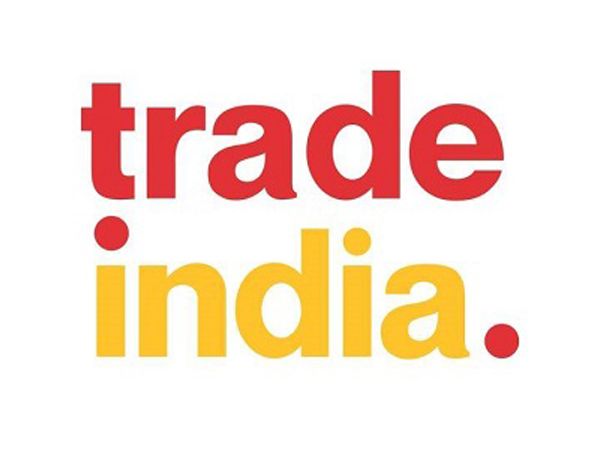How To Start a Wardrobe Manufacturing Business In India?

Introduction
Wardrobes are huge cupboards with drawers, a mirror, and other accessories that are used to store clothing.
There is a lengthy and varied history to the term wardrobe. Geoffrey Chaucer used it to refer to a latrine, and for a while, it also meant a chamber or apartment; the king's wardrobe, for example, housed a significant amount of administrative apparatus in medieval England.
Top 7 modern Designs of Wardrobe for Bedroom
- Fibreboard Wardrobe
- Built-in Modern Cupboard design for Bedroom
- Wardrobe with mirrors
- Elevate or Loft wardrobes
- Metal Wardrobe
- Sliding Panel Wardrobe
- Multi-Functional Wardrobe
Steps to Start a wardrobe manufacturing business in India
If you're a woodworker who's looking for a great company concept, the wardrobe manufacturing industry may be the right fit. By the end of 2023, the wardrobe business in India is estimated to be worth $61 billion.
There is a lot of room for growth in this industry, and you may take advantage of that fact. Improved infrastructure and thoughtful interior design are becoming increasingly important. Establishing a Wardrobe manufacturing facility is an excellent idea if you are talented in the design and construction of fine pieces of wardrobe.
The starting point for wardrobe design manufacturers is to remember not only business management skills but also wardrobe design and manufacturing expertise. Here is the list:
- Research the market
- Create a Plan
- License and Registration
- Starting Investment
- Machinery
- Employ and skilled employees
- Raw Materials
- Target Consumers
- Growth
- Profit Margin
1: Research the market
The Indian wardrobe industry, as previously mentioned, is poised for rapid growth. Individual market research, on the other hand, is an absolute must. It is possible to do localized market research. You'll have a greater understanding of how to establish and grow a Wardrobe business in your area.
From time to time, as well as from location to location, customer demographics and demands change. Your company concept must be taken into consideration while researching the market for a wardrobe business.
2: Create a Plan
After you've done your market research, you'll need to focus on defining your specialty. To be successful in the wardrobe manufacturing industry, you must be clear about what you have to offer.
Is your wardrobe manufacturing facility going to create items for the workplace or the home? Which clients will your wardrobe firm serve, a certain niche or the general public? What kind of style do you want to portray?
The following steps are included in the wardrobe business plan:
- Locating a suitable place for your business to be located
- You've identified who you want as a potential client.
- Choosing the materials for your wardrobe
- What kind of furnishings you'll be selling or what you'll be selling?
- Required licenses and registrations
- Profitability and total investment
- Increasing the Visibility of Your Company
Also; read: Bedroom Cupboard Ideas For Small Space
3: License and Registration
If a company does not have the proper licenses and permissions, it will not be able to operate.
- Factory laws,
- GST papers,
- Trade license,
- NOCs, and NDAs
- MSME registration,
- Active Bank Account
- Email Id
Preparation of your policies and documentation will be made easier if you have legal assistance before starting your wardrobe manufacturing business. Make sure you have trademarks, patents, and copyrights in place before you enter the market to avoid any problems. All of these important documents will aid you in avoiding future snags. An Aadhar card, PAN card, and bank account are all you need to apply for these registrations.
4: Starting Investment
Starting a modern wardrobe design company in India requires an investment of between 10 and 12 lakh rupees.
Investments at the outset include
- 10 lakhs for the stock purchase
- The cost of building a shop Is 1 lakh.
- Work on the shop interior costs Rs. 50,000. (Chair, table, racks, signage boards)
- 10,000 rupees for marketing and registration.
- Security deposit --> Additional charge (Varies according to location)
- Vehicle used to transport the goods (optional)
- Shop rent, personnel wages, stock updates, electricity bills, and so on are among the regular monthly costs.
5: Machinery
In this section, I'll go over a few types of machinery and tools that are vital to any wardrobe manufacturing operation. You'll need a lot more tools depending on the quality of your work and the type of cupboard you're making.
- Timer Sizer
- Band Saw
- A Power Drill
- Jigsaw
- Hand Saws, a router, and two router bits
- Hammer and some screwdrivers
- Radial Arm Saw
- Chisels and a wooden mallet
- Stationary machines
- Double end tenoner
- Panel automatic packaging machine
For your wardrobe factory, machinery is the next most crucial factor to consider. To establish a wardrobe business, you'll need to factor in the cost of machinery. For a smaller wardrobe manufacturing company, this investment will not be as significant.
Also, read: How To Set Up A Wooden Furniture Manufacturing Business
6: Employ and skilled employees
It's not simple to start your own clothing company. As with any other enterprise, it takes time and effort on your part. Hire a team to help you transform your hard effort into smart work. Especially in a wardrobe factory, trained labor is essential.
It is estimated that to run this firm at a medium size, an additional
- a group of ten unskilled employees
- the 5th-semi-qualified staff
- 5-talented employees
In addition, workers must get adequate instruction in the following areas:
- The use of machinery
- Using and Maintaining the Gear
- Precautions should be taken
To get the machinery, you've spent money on to operate, you'll need a team on your side. Skilled and unskilled workers can be separated in your workforce. After that, you can go to work on putting together teams and leaders who can teach one another about business and manufacturing.
7: Raw Materials
One of the most important aspects of starting a bedroom wardrobe design business is figuring out where you'll get your raw materials. Find and maintain good working connections with suppliers who can supply you with the greatest raw materials.
Starting a wardrobe manufacturing business requires the correct sort of wood, which will be determined by the type of wardrobe you plan to manufacture. to start.
Additionally, you'll need metal, fasteners, steels, screws, plastic, handyman tools, and packing material for your wardrobe manufacturing firm. Having a clear vision of the basic materials you need can save you money and space in the long run.
8: Target Consumers
If you don't know where you're shooting at, it's like trying to strike a moving object in complete darkness. It's possible that the shot didn't hit the target. With a well-thought-out strategy in place, you'll know precisely where to aim your arrows when it comes to your clothing manufacturing firm.
Your target audience should be:
- Commercial Offices
- Houses
- Restaurants
- Cafés
- Colleges
- Shopping malls
- Departmental stores
This will allow you to construct a watertight business strategy for your business. Your marketing activities will have a clear direction.
9: Growth
The following are prospective development avenues for the custom-made wardrobe industry:
- A CAGR of 11.32 percent is predicted for the Indian wardrobe market.
- A CAGR of 14.16 percent is forecasted for the Indian residential wardrobe market, and a CAGR of 11.9 percent for the Indian commercial wardrobe market, respectively.
- In addition, the Indian wardrobe sector has grown as a result of the rise in customizing rooms through wardrobes and interior design.
10: Profit Margin
You may expect a 40% profit margin from this firm.
- This business, like a wardrobe, has a long shelf life and several potential avenues for growth.
- An advantage of the business is that it is likely to serve a wide range of customers domestically as well as internationally because of the wide range of clothing styles, types, and available purposes.
- If you're looking to expand your retail, wholesale, and even online sales through Amazon and tie-ups with sliding wardrobe design apps like this business opportunity is for you.
- The investment in this firm is low, and the profit margins are significant in proportion.
11: Promoting your Wardrobe business
You may effortlessly trade by word of mouth over time if you deliver high-quality items at a fair price. During significant holiday seasons, you may boost your consumer base by running discount programs. The store's location is advertised via eye-catching billboards.
Conclusion
This might be a terrific approach to get consumers if you're starting a small wardrobe-making business. There are a variety of styles of wardrobe that may be made for personal or commercial use, and the objective of this business is to ensure that these areas remain organized and appealing at the same time.
FAQs: Wardrobe Manufacturing Business
Q. Is it possible to establish an internet wardrobe-making business?
Ans. Any type of business may be created online, even a wardrobe company. With an online wardrobe or cupboard business, you can better serve your clients and save money in the process. As a bonus, you'll save the overhead of maintaining an actual store. Remember that even if you run an online wardrobe business, you'll still need a warehouse to keep your inventory and goods safe and secure. If you don't pay attention, you will incur these costs.
Q. How much money do I need to start a wardrobe manufacturing business?
Ans. It's critical to have an idea of how much money you'll need to get your own business off the ground. Consider a starting investment of INR 10 to 15 lakhs for a wardrobe business. If you don't have the money, you can raise it from angel investors or invest it yourself.
Q. What is the average profit margin of a wardrobe manufacturing business?
Ans. 25 to 30 percent profit margin on revenue is typical.
